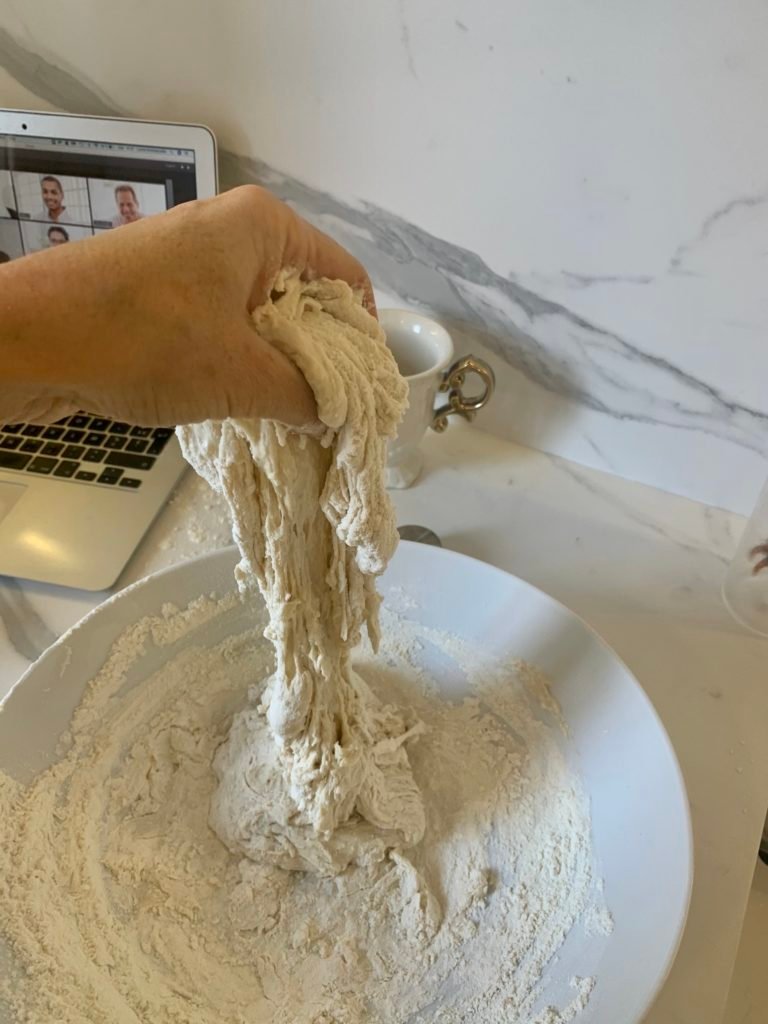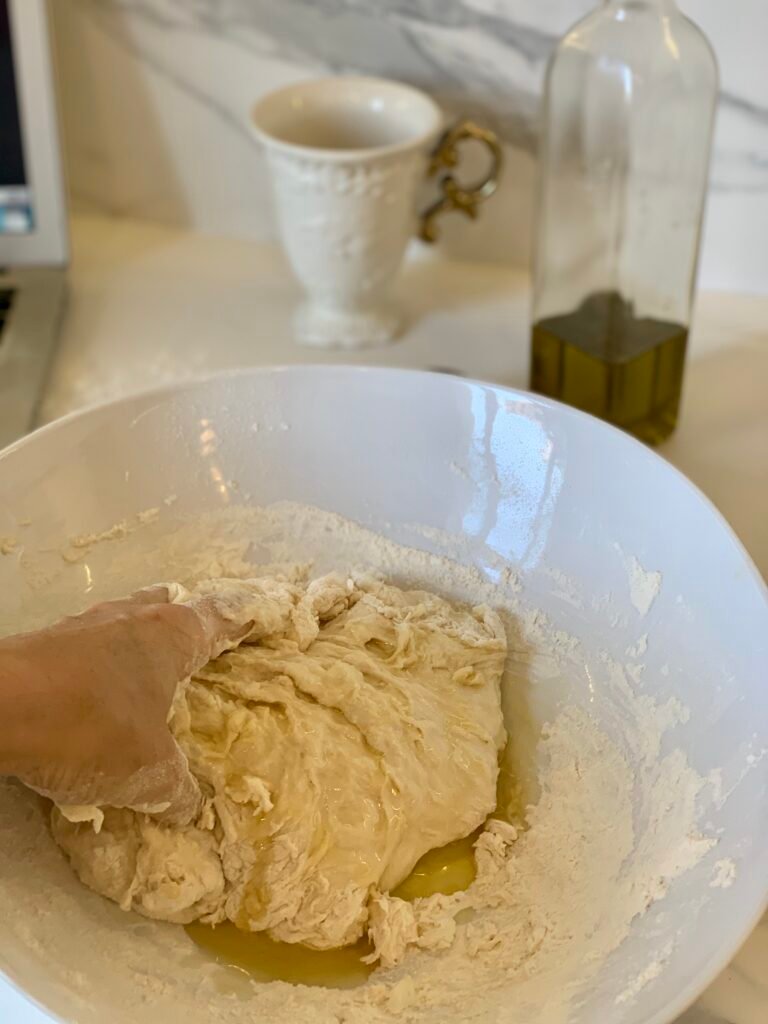French baguette, make it with this deliciously easy recipe. Baguette bread can be made in a simpler, faster and easier way than traditional recipes. So here is a modern version, for a dynamic person who wants to enjoy eating well. But has so much to manage at the same time that this active individual can’t stay too long in the kitchen. So I’m here to make your every day simpler with my simplified recipe for the French bread baguette
FRENCH CULTURE
As you know, French people live a love story with bread, which is the basis of their diet. The baguette and its variations can also be found everywhere on the French table. At breakfast to make toasted bread slices with butter and jam. For lunch as an accompaniment to a salad or another dish, for dinner too. Without forgetting that bread is the best friend of cheese, another dish that can’t do without bread.
You can even find bread as a dessert by making French toast.
To taste it too, children often take bread and chocolate and make a kind of small sandwich.
A FRENCH WAY OF LIFE
Bread is, therefore, an essential food of the French culture, however, the French make it rather little by themselves. They prefer to go to buy it at the local bakery. Why that? French people are cooking a lot !!!
It’s because it is also a purpose of exit for the elderly, a social moment. On Sunday it’s a tradition going buying its french baguette. At this moment we often purchase some pastries, for breakfast if we do not toast the bread of the day before. It’s a treat to eat it hot out of the oven.
But the problem when it has just come out of the oven is that it is very difficult to take it home. Indeed, it will be eaten on the way. Starting with this part which is rarely eaten at the table because hot or cold, it is a piece that is regularly given to children at the exit of the bakery.
But when you become an adult, you still have that taste of that quignon that is the crunchiest part of the bread.
DEBATE ON THE NAMING OF THE TIP OF THE FRENCH BAGUETTE
The bread quignon is the end of the bread. As you know there are two ends in a baguette so two quinons. Often the two quignons disappear before you get home 🙂
However, depending on where you live, you don’t use the same word to designate the tip of the French baguette. Northern France is a fan of the “croûton” and southern France mainly uses the word “quignon” to designate the tip of its baguette.
Other names for the end of bread exist such as the crusted used along the Spanish border or the cul du pain in the North of France. With its many linguistic variations, the subject of bread is even more divisive than the eternal chocolate bread/chocolatine debate.

HERE MY SIMPLIFIED RECIPE FOR THE FRENCH BREAD BAGUETTE
French baguette, make it with this deliciously easy recipe. Now, let’s cook together the french bread, la baguette de pain!

INGREDIENTS
2 cup of flour
Baker’s yeast : 5,5 g of Baker’s yeast ( a little bag) : 1 tablespoon. If you use fresh yeast the quantity is 10g ( 2 tablespoons )
Fine salt : 5g of fine salt : 1 tablespoon
Water : 1 cup of warm water, but not hot
Sugar : 1 teaspoon
PREPARATION
Step 1
– Dissolve the Baker’s yeast in a little warm water. The water should be about 37 degrees Celsius, 100° degrees Fahrenheit which corresponds to your body temperature. If the water is too cold it will not activate the yeast, if it’s too hot it will kill the yeast
Add in this water a tea spoon of sugar
Step 2
– Mix salt and flour
-Make a well in the center and pour the water with the yeast and sugar.
Gently stir in the flour and water by hand. Continue until you have a very soft dough and pour it onto a work surface to knead it.

Step 3
- – Knead the dough for 5- 7 minutes : You take the dough and fold it over to give elasticity and body

Step 4 –
-Then you remove the dough to a bowl and cover it with a humid cloth. Let it rest 30 min in a warm oven ( 30 ° C) The dough will grow and it has doubled in volume

Meanwhile your dought is raising you could make flat fried bread.
Step 5-
-Take the bread dough out of the oven, flour your fist and come to chase the air.
Lightly floured the work surface and fold the dough inward and roll it with the palm of your hand. Imprison the ball of bread with your fingers and turn.
Place the loaves on a baking sheet. Before baking the breads, let them rest for about 1/2 hour.
Bake the bread in a very hot oven (240° C°- 500° F with humidity ) for around 15 minutes

Check the making by tapping the base of the loves, It should sound hollow.

EXPLANATIONS AND RESOLUTION OF PROBLEMES: THE SOLUTIONS
Normally if you follow well my simplifier recipe of the french bread baguette, everything will go well. But in case of hère some tips.
Why does bread dough rise?
Bread is the result of fermentation. Flour is mixed with a ferment and then the micro-organisms it contains break down the sugars in the flour. If you use baker’s yeast (dry or fresh), these sugars are broken down by producing alcohol (which will evaporate during baking) and carbon dioxide.
It is the appearance of carbon dioxide that triggers the formation of bubbles: the bread swells and takes on taste.
In order for the ferments to do their work, the dough must be at the right temperature. This is achieved by adding more or less warm water during kneading. Then by kneading, the quantity of oxygen necessary for the micro-organisms in the yeast is added. This is also what will activate the gluten and allow the bread-making process. It is the development of this gluten network that will give the dough its elasticity and thus allow it to rise well.
But then, why doesn’t my bread rise?
The temperature
This is where the problem most often lies. When adding water, make sure to keep the temperature warm (around 30°C).
If the water is too cold, the ferments fall asleep and the dough does not rise.
If the water is a little too hot, the dough will rise a first time, but the ultra-activated ferments will eventually fall off during the second sprouting or during baking. Moreover, the bread will have no taste.
If the water is really too hot, the bacteria will be killed and the yeast will no longer be able to process the sugar in the flour.
Water quality
It is important to know that too much chlorinated tap water can prevent the dough from rising properly. Chlorine kills the ferments. If this is the case in your area, use mineral water.
Salt
Salt is essential for making bread that is both beautiful and good. However, it is essential not to put it in contact with yeast, because it kills the ferments.
When mixing all the ingredients, make sure that the salt does not come into contact with the yeast, whether it is fresh or dry.
Flour
As we have seen above, the dough needs gluten to rise properly. Therefore, favour flours type T55 which are richer in gluten.
Take care not to use flour that is too old: over time it will lose its qualities and the gluten will degrade.
How to save unleavened bread so as not to spoil the dough?
Instead of throwing away your dough, rectify it. Open a new yeast sachet and mix a teaspoon of yeast with a quarter litre of warm water (at about 35°C) and a tablespoon of sugar. Leave this mixture to work for about ten minutes until it starts to foam and rise.
While the yeast is activating, gently warm up your unleavened dough by placing it in a warm place in your warm oven ( 35° C or in a bathroom or even near the washing machine).
Then mix your yeast with the unleavened dough, knead it and let it rise in a warm and humid place.

[…] you would like we cook flat fried bread and a french baguette together I will be please to welcome you on my airbnb online experiences cooking […]
[…] even old bread to make croutons. If you don’t have baguette, you could use soft […]